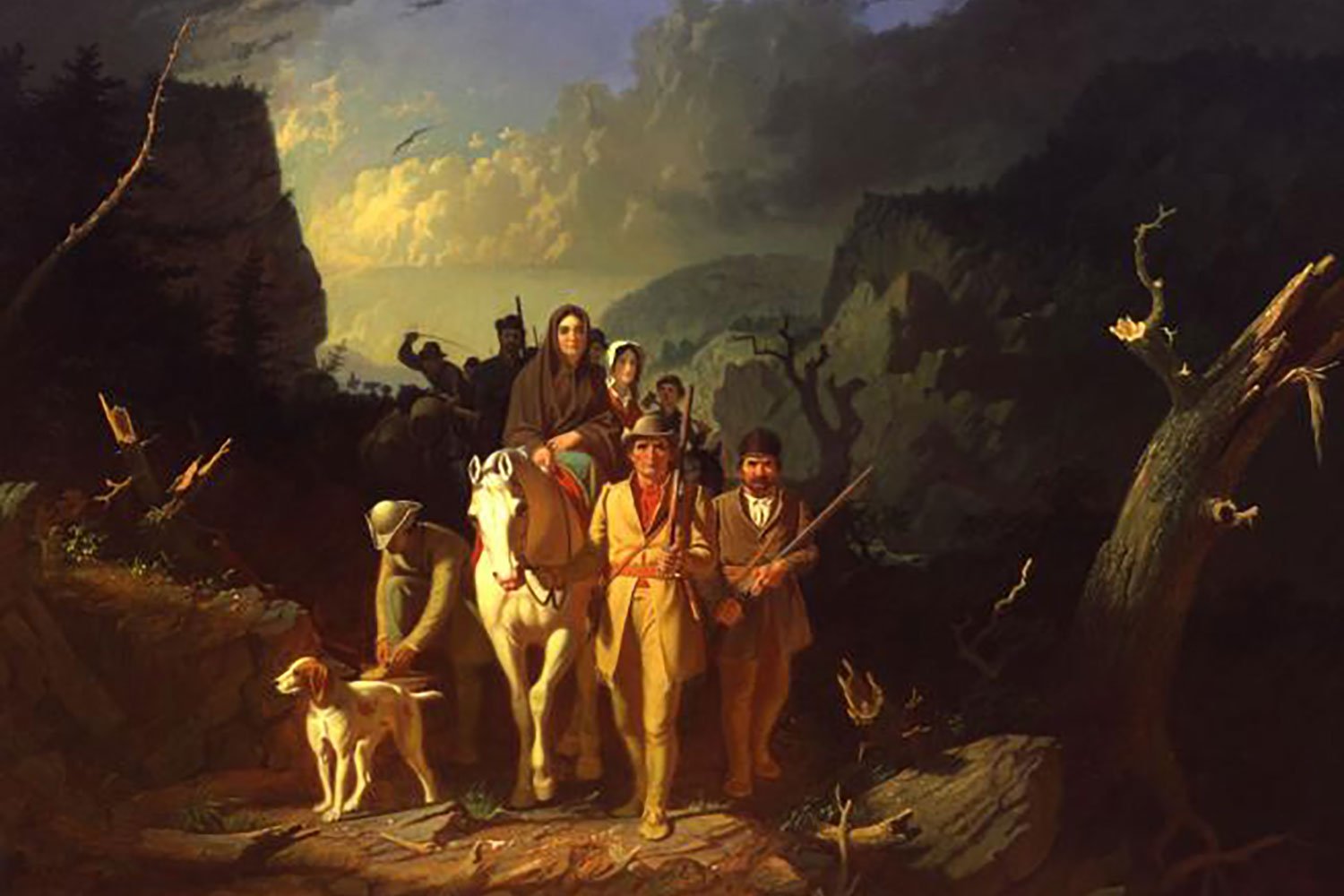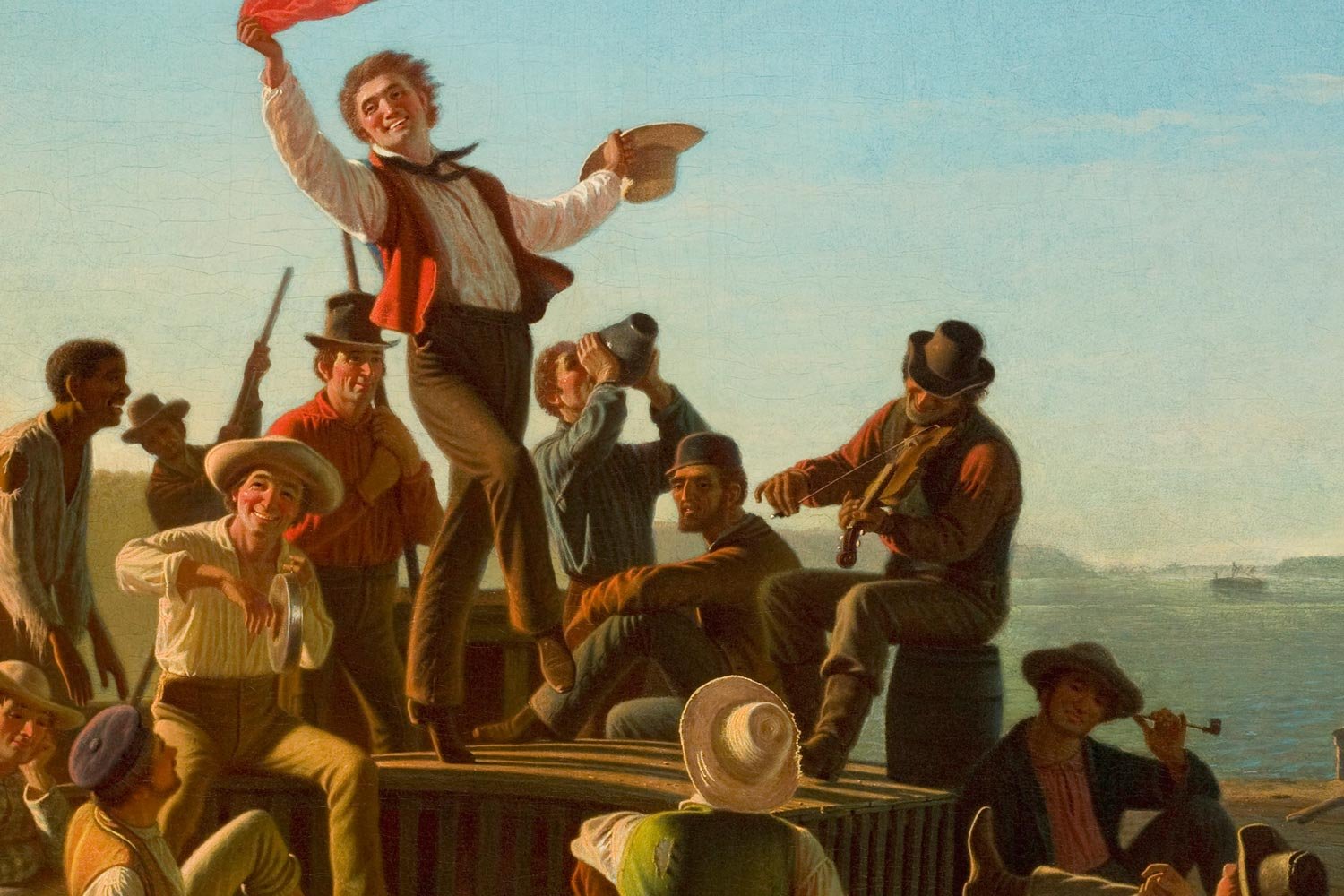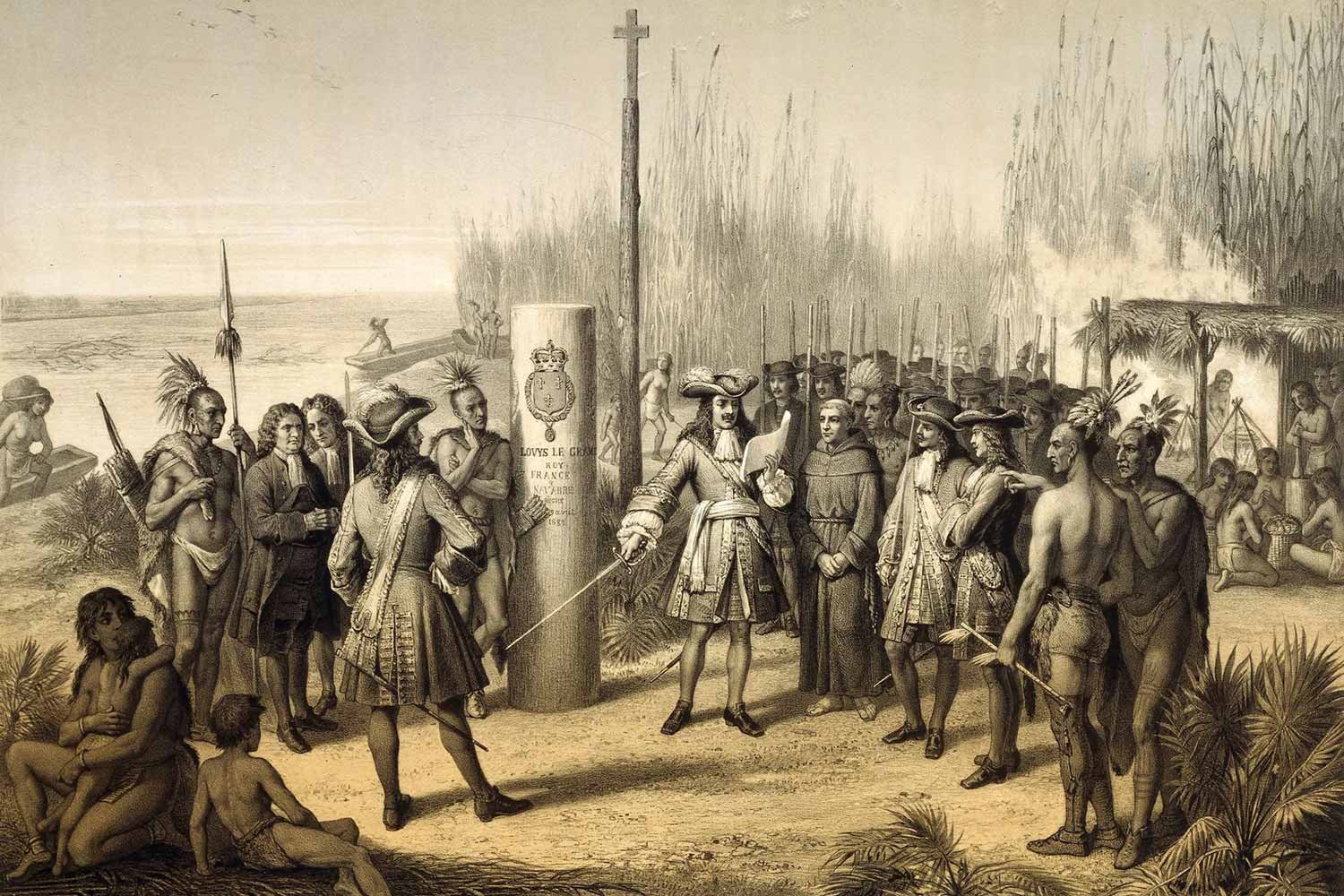Louisiana Purchase, Part 2: Western Settlement and the Mississippi River
The Treaty of Paris of 1783 which officially ended the American Revolution was generous to the United States, much more so than most had expected. Besides recognizing American independence, the provisions which Great Britain proposed greatly expanded the boundaries of the new nation, granting the United States all the land north of the Ohio River as far west as the Mississippi and as far north as British Canada. But like all gifts from adversaries, this one came with some issues that would simmer for decades.
This cession of what had once been part of Great Britain’s Province of Quebec was thanks in large part to George Rogers Clark conquering the territory during the war. The treaty further stipulated that the boundaries of their former colonies of Virginia, North Carolina, and Georgia would stretch to the east bank of the Mississippi, placing American lands squarely across from Spanish Louisiana and creating a one thousand mile border between the two countries.
The treaty also returned Florida to Spain which once again connected Florida to Spain’s colony of Louisiana thus creating a Spanish arc across the northern shore of the Gulf of Mexico. Whether it be through Pensacola or Mobile Bay or the river port of New Orleans, all American western goods and produce required Spanish permission to reach distant markets. Perhaps more importantly, this linking meant that Spain now controlled both banks of the lower Mississippi for a stretch of almost one hundred and fifty miles and therefore had the ability to close off the river to unwanted traffic.
Following the American Revolution, as more and more Americans headed west into Kentucky, Tennessee, and the Northwest Territory, the need to secure navigation rights on the Mississippi River grew in importance. With no road network to transport goods and produce over the Appalachians to eastern markets, westerners relied on the Ohio and Mississippi Rivers as their water highway to transport their goods to markets along the Atlantic seaboard. Especially unfortunate for western Americans was the fact that the key to the continent, the critical riverport of New Orleans, lay within Spanish Louisiana. The treaty also created confusion regarding the northern boundary line separating Spanish Florida and the state of Georgia, a dispute that strained relations between the two countries.
But even more concerning to Spanish officials, was the rapid influx of Americans into the region. In 1784, the population of Spanish Louisiana was 30,000 inhabitants, half of which lived in or near New Orleans; the population of Kentucky and Tennessee was about the same. By 1800, the population of the two western states had exploded to 326,000 residents while that of Louisiana stood at 50,000, and Spanish officials grew concerned that they could not withstand the American onslaught. River traffic also boomed as several hundred flatboats a year loaded with American goods drifted down the Mississippi to be transferred in New Orleans from flatboats to ocean going vessels.
John Trumbull. “Thomas Pinckney.” Yale University Art Gallery.
As a result, Spain became a troublesome neighbor and, in 1784, issued an imperial decree that closed the Mississippi River to all English and American traffic. Threats of armed retaliation by western leaders such as George Rogers Clark gave the Spaniards pause and officials were told not to enforce the decree. But relations remained strained for several decades as more and more Americans poured into the Ohio Valley.
Unfortunately for national unity, these disagreements with Spain brought sectional differences within the United States to the surface. To ease tensions with Spain and improve trade relations, northern Congressmen like New Yorker John Jay quietly opened negotiations with Spain, offering to close the Mississippi for twenty five years to American river traffic in exchange for improved commercial relations which would benefit northern merchants.
James Monroe, a Virginia Congressmen, got wind of these talks and sent word to George Washington and James Madison, fellow Virginians with a national vision. As the terms of the deal leaked out, westerners howled long and loud and the deal fell apart. As Kentucky Judge George Muter wrote Madison, “I have not met with one man who would be willing to give the navigation up, for ever so short a time, under any terms whatsoever.” But the willingness of northerners to sacrifice navigation rights on the Mississippi for their own commercial benefit was something westerners never forgot. Consequently, securing an open Mississippi and the right to deposit goods at New Orleans became one of the national priorities of those with western interests at heart.
Out of this episode also grew a movement whose purpose was to separate Kentucky from the Union and attach itself to Spain whose geographic and economic interests seemed more closely aligned with that of western Americans. This secession movement was spearheaded by General James Wilkinson, perhaps the greatest scoundrel in American history, an accomplished intriguer who makes Benedict Arnold seem tame in comparison. Fortunately for the country, Wilkinson’s efforts came to nothing, but it further confirmed in men like Washington the need to somehow cement the bonds between east and west.
When Washington became President, he sent South Carolinian Thomas Pinckney to Spain to secure access to the Mississippi for the United States and finally settle the border dispute between Georgia and Florida. Pinckney was hugely successful and the resulting Treaty of San Lorenzo, also known as Pinckney’s Treaty, ratified in 1796, attained all Washington’s immediate goals, demonstrating to those in the trans-Appalachian region that western interests were now American interests.
But the fact remained that Spanish possessions bounded the United States along its southern and western borders, and as long as that situation continued Spain would be public enemy number one to all Americans with visions of manifest destiny. Until the Spanish cork was removed from the bottle of American expansionism, the United States would not be able to reach its potential. That reality created a natural cauldron of trouble for the two countries and, as a result, over the course of the next thirty plus years Spain and America engaged in a series of disagreements and conflicts, including the 1803 acquisition of Louisiana from France which Spain opposed, the Zebulon Pike expedition of the southwest in 1807 , and the coerced sale of Spanish Florida to the United States in the 1819 Adams-Onis Treaty.
With navigation rights on the Mississippi secured, American eyes now turned towards Spanish Florida and pushing the nation’s boundaries to the Gulf of Mexico. And the acquisition of this territory became the primary mission of Americans with dreams of national expansion. Thomas Jefferson was one of these men and when he became President, he made it his top priority.
Next week, we will discuss the opening negotiations for Louisiana. Until then, may your motto be “Ducit Amor Patriae,” love of country leads me.




The midnight deal Robert Livingston, United States Minister to France, struck with Francois Barbe-Marbois, Napoleon’s Finance Minister, on April 13, 1803, to purchase the Louisiana territory was one of the most impactful agreements in the history of the United States. It resulted from months of conversations Livingston had had with numerous French officials, creating a foundation for the details that would follow. But as important as this step was, there remained several hurdles to overcome.